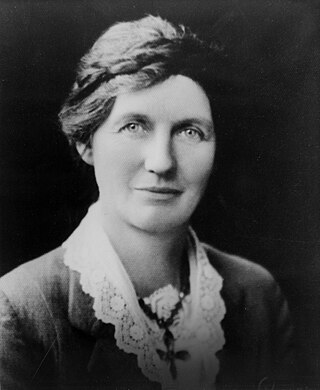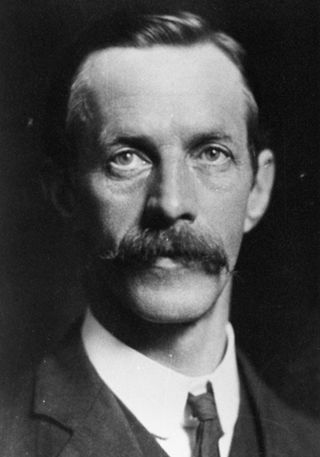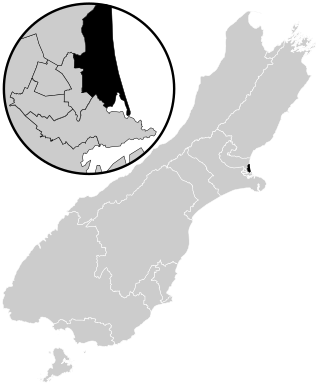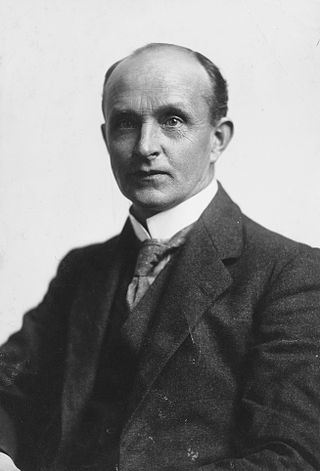
Elizabeth Reid McCombs was a New Zealand politician of the Labour Party who in 1933 became the first woman elected to the New Zealand Parliament. New Zealand women gained the right to vote in 1893, though were not allowed to stand for the House of Representatives until the election of 1919. McCombs had previously contested elections in 1928 and 1931.
The Independent Political Labour League (IPLL) was a small New Zealand political party. It was the second organised political party to win a seat in the House of Representatives, and was a forerunner of the modern Labour Party.

The 1908 New Zealand general election was held on Tuesday, 17 and 24 November and 1 December in the general electorates, and on Wednesday, 2 December in the Māori electorates to elect a total of 80 MPs to the 17th session of the New Zealand Parliament. A total number of 537,003 (79.8%) voters turned out to vote.

The 1911 New Zealand general election was held on Thursday, 7 and 14 December in the general electorates, and on Tuesday, 19 December in the Māori electorates to elect a total of 80 MPs to the 18th session of the New Zealand Parliament. A total number of 590,042 (83.5%) voters turned out to vote. In two seats there was only one candidate.
The Grey by-election of 1913 was a by-election held for Grey during the 18th New Zealand Parliament. As no candidate won an absolute majority on the first ballot on 17 July, a second round was held on 24 July. The seat had become vacant due to the death of Arthur Guinness. Three candidates contested the seat, and it was won by the left-wing candidate, who was elected on the second ballot with Liberal support.

Christchurch East, originally called Christchurch City East, is a current New Zealand parliamentary electorate. It was first created for the 1871 election and was abolished for two periods, from 1875–1905 and again from 1946–1996. It was last created for the introduction of the MMP voting system for the 1996 election. The current MP is Reuben Davidson, a member of the New Zealand Labour Party who was first elected in the 2023 New Zealand general election.

Sir Terence Henderson McCombs was a New Zealand politician of the Labour Party, a High Commissioner, and the first principal of Cashmere High School.

James (Jimmy) McCombs was a New Zealand Member of Parliament for Lyttelton.

David McLaren was a Mayor of Wellington and Member of Parliament in New Zealand.

Henry Thomas Joynt Thacker was a medical doctor, New Zealand Member of Parliament and Mayor of Christchurch.
Avon is a former New Zealand parliamentary electorate. It was created for the 1861 general election and existed until 1996. It was represented by 13 Members of Parliament and was held by Independents, Liberal Party or Labour Party representatives.
Lyttelton is a former New Zealand parliamentary electorate. It existed from 1853 to 1890, and again from 1893 to 1996, when it was replaced by the Banks Peninsula electorate.

The Lyttelton by-election of 1933 was a by-election held during the 24th New Zealand Parliament in the Christchurch electorate of Lyttelton. It is notable for being won by Elizabeth McCombs of the New Zealand Labour Party, who became the first woman to be elected to the New Zealand Parliament. This by-election was therefore seen as a milestone in Women's suffrage in New Zealand.

The 18th New Zealand Parliament was a term of the New Zealand Parliament. It was elected at the 1911 general election in December of that year.

The Second Ballot Act 1908 was an Act of the New Zealand Parliament for regulating elections to the New Zealand House of Representatives. The Act implemented the two-round voting system to ensure that Members of Parliament were elected by a majority, not a simple plurality like the first-past-the-post voting system that had been used since the 1853 New Zealand general election.
The New Zealand Labour Party leadership election, 1919 was held on 27 August 1919 to choose the next leader of the New Zealand Labour Party. The election was won by Grey MP Harry Holland.
The 1911 Christchurch North by-election was a by-election during the 17th New Zealand Parliament held on 17 August that year in the Christchurch North electorate. It was triggered by the death of sitting member Tommy Taylor on 27 July and was won by his close friend and political ally, Leonard Isitt.
The 1923 New Zealand Labour Party leadership election was held in February 1923 to determine the future leadership of the New Zealand Labour Party. The election was won by Buller MP Harry Holland, once again retaining office.
The 1921 New Zealand Labour Party leadership election was held in September 1921 to determine the future leadership of the New Zealand Labour Party. The election was won by Buller MP Harry Holland, retaining office.










